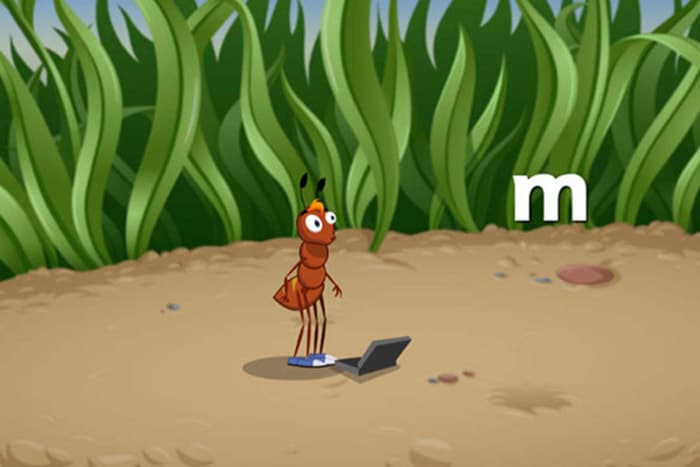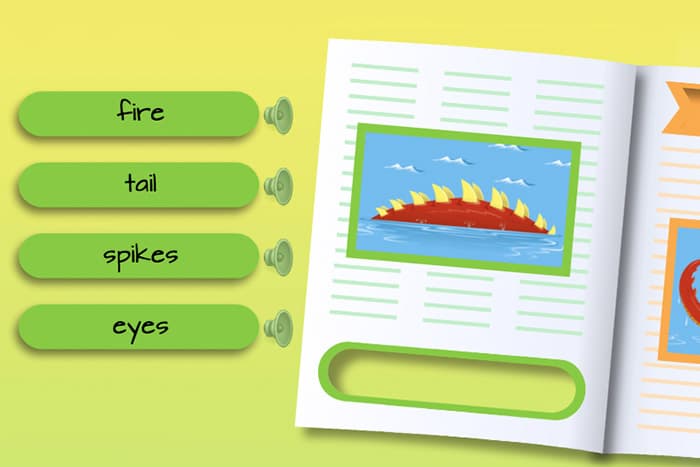


How to Teach a Dyslexic Child to Read

Most children with dyslexia can learn to read fluently. Parents can start by building phonics skills and vocabulary at home.
Dyslexia is a difference in the way the brain processes language, ranging from mild to severe. Most children with dyslexia can learn to read fluently with the right combination of school and home support.
Explicit and systematic instruction, which develops sound‑letter awareness and an understanding of how written language works, is a very effective way to help children with dyslexia learn to read.
Programmes like Reading Eggs, which use explicit and systematic instruction, can make a huge difference in how successful children with dyslexia learn how to read. Read more.
Try the award‑winning program for FREE
Reading Eggs is the multi‑award winning program that helps children of all abilities learn how to read. Access hundreds of fun, engaging lessons, reading activities and literacy games.
Parents can use simple strategies at home to give dyslexic children the best possible start in their reading.
Strategies to teach a child with dyslexia to read at home
Individuals with dyslexia lack phonemic awareness – the ability to recognise the individual sounds that make up words. Systematic and explicit instruction in their educational environment helps to remediate the problem for most dyslexic children.

Reading Eggs has as huge focus on building phonemic awareness, and the best part is it progresses at each child's individual pace. Free trial.
Once a child has grasped the concept of phonemic awareness, they start to work on phonics skills – linking sounds to letters in order to write and read words. This is when students begin to build a working vocabulary. Eminent reading researcher Linnea Ehri has found that “the alphabetic system provides a mnemonic that helps students secure new vocabulary words in memory, both their pronunciations and their meanings.” (see footnote i)
Parents can support this development at home with a variety of activities using phonics to sound out words and build their child's vocabulary. Be sure to limit sessions to ensure your child's attention is not worn out, and just focus on a few new words per session. Studies have shown that “Teaching children too many words during a lesson reduces retention.” (see footnote ii)
Building vocabulary with phonics
Making CVC words
Lay out a set of alphabet cards in two rows – one for consonants and one for vowels. Start with six letters: s, t, p, n, a, i. Have a set of pictures that are CVC words (consonant‑vowel‑consonant) using the given letters. Some examples are pan, tin or tap. Ask the child to choose a picture and name the item. They should identify the initial sound and pick the matching letter. Then do the same with the end sound.
Lay out the two consonant cards with a gap between and ask them to identify the missing vowel in the middle. Next, ask them if the other vowel could be used to make a word with these consonants. For example, if they make 'pan', they can also make 'pin'. Write out their CVC words to help cement them in memory. Add another letter for each session, building their CVC word bank.
Onset‑rime flip book
Make a flip book of onsets and rimes. On the left, have a set of single letter consonant cards for the onsets and on the right, a set of cards with rimes (word endings) on them. These could range from basic short vowel + consonant endings such as 'at' and 'on', to more complex long vowel spellings such as 'ine' and 'ean'. For a challenge, include rimes such as 'ight' and 'ought'.
Use the first rime and flip through the onsets to identify as many 'real' words as they can. Have them write a word family list for the rime to secure its place in the child's memory. Just focus on one word family in a session.
Complex onsets
To begin with, when building onset‑rime words, onsets should be single letters. As a child's phonetic knowledge increases, look at words with onsets that are blends, for example, 'tr' for tree or 'str' for strap. Have a set of pictures of items that start with a blend. Ask your child to choose a picture, sound out the word and write it down. Help them identify all the sounds in the initial blend.
Once they have worked out how to spell the blend, revisit their onset‑rime word family lists and see if they can add new words using the blends as onsets with the rimes they know. When your child learns about digraphs, for example, 'sh', 'ch', 'th', you can add some more words to the word families.
Advanced vocabulary activities for dyslexic children
Adjective alliteration
Ask your child to choose an object, place or person. Focus on the first sound in the word and identify it. Now ask them to come up with an adjective (describing word) that has the same starting sound. Put them together and have the child draw a picture, for example, a blue balloon, or a muddy mountain, or happy Harry.
Next they try sounding out the two words and writing down the letters for the sounds they hear. Praise all correct letters, point out the value of a letter that may be wrong but represents a correct sound, and help them to work out what letters or sounds they missed.

Reading Eggs uses a variety of fun and colourful activities that build children's vocabulary. Free trial.
Spotting mistakes
Choose a book you have read with your child. Rewrite the text but include some mistakes. Swap letters that are phonetically the same, so 'cat' becomes 'kat'. Leave out a letter, for example writing 'blck' instead of black or 'tee' instead of tree. Use the wrong vowel, such as 'cer' instead of car. Add an extra letter ('bookk') or forget to double a letter ('cal'). Leave out a silent letter, for example the 'e' in line – 'lin', or the 'g' in night – 'niht'.
Ask your child to read this seemingly familiar text. Tell them there are some spelling mistakes and they should circle every word they can find that does not look right to them. Praise all the problems they find and ask if they know what is wrong and how to fix them. If not, explore the problem together.
20 questions
This is a classic game. Your child chooses an object and keeps it secret. You ask them yes/no questions about the item to help you guess what it is. Ask a mix of questions about the object itself, and how to sound it out or spell it. For example, Is it an animal? Does it start with ssss? Does it have an E in it? Does it rhyme with cat?
Using Reading Eggs to build phonics skills for children with dyslexia
Another way to supplement your child's learn‑to‑read journey at home is with an online programme your child can access through a computer or tablet. Reading Eggs is a structured online learn‑to‑read programme that offers personalised instruction in an engaging manner.
A placement test ensures the student starts at the optimal level for their skills and knowledge. It is not based on their age or grade. The programme only moves along when they have grasped each lesson, so it provides individualised learning at the student's pace.
The Reading Eggs programme begins with phonemic skills – identifying beginning sounds and rhyming words, matching sounds and letters, sounding out words, blending sounds to read words. The lessons build on these early phonemic skills to get students reading words, sentences and whole books.
Each lesson in Reading Eggs begins with an animation where fun characters explain a particular element of the English language – sounds, letters, rimes, sight words, spelling rules, and more. The interactive activities that follow provide the repetition needed for the skills and knowledge to become part of the child's long term memory, without letting them get bored.
Each Reading Eggs lesson ends with a book matched to the student’s current ability, which lets them enjoy the thrill of reading on their own. They can choose to have the book read to them, then reread the book to themselves. There are over 3000 levelled books for your child to choose from when reading for pleasure.
Importantly, Reading Eggs rewards students at every step, with congratulatory sounds and messages, with eggs and points and cards to be collected, with critters (quirky pets) to earn, and certificates to be printed. Your child will grow in confidence as well as building their reading skills.
See how Reading Eggs works
We offer all new parents a free trial to see how Reading Eggs works for their child.
It only takes a few minutes to get started – sign up here.
Try Reading Eggs today to see how your child's reading and comprehension skills can improve in just weeks.
Reading Eggs testimonials for children with dyslexia
Reading Eggs has been the best purchase for our homeschool this year. Our 8‑year‑old dyslexic son loves and learns from this visually exciting programme. It has helped his reading and also his writing as he has started his own 'Reading Eggs' story book! He draws his own map, creates characters for each level and writes a story for each one. Amazing!”
– Edyth N.
“Wonderful! My 10‑year‑old son has dyslexia and has finally learned to read, albeit slowly in our local language. English is the language we speak at home and I thought I would give Reading Eggs a try, while putting NO pressure on him to do it. He asks to do Reading Eggs several times a week! He is on Lesson 39. I know he is progressing because of the progress reports (I dare not look over his shoulder!) Thank you for the programme!”
– Shoshana G.
i Ehri, L.C. (2005) Learning to Read Words: Theory, Findings, and Issues. Scientific Studies of Reading, 9(2), 167-188, DOI: 10.1207/s1532799xssr0902_4, retrieved from http://www.tandfonline.com/doi/abs/10.1207/s1532799xssr0902_4
ii Taylor, C.N., Aguilar, L., Burns, M.K., Preast, J.L., Warmbold-Brann, K. (2017) Reliability and Relationship to Retention of Assessing an Acquisition Rate for Sight Words With Kindergarten Students. Journal of Psychoeducational Assessment, May 2017, Retrieved from http://journals.sagepub.com/doi/10.1177/0734282917707144


